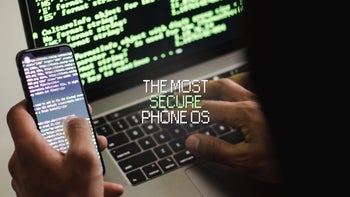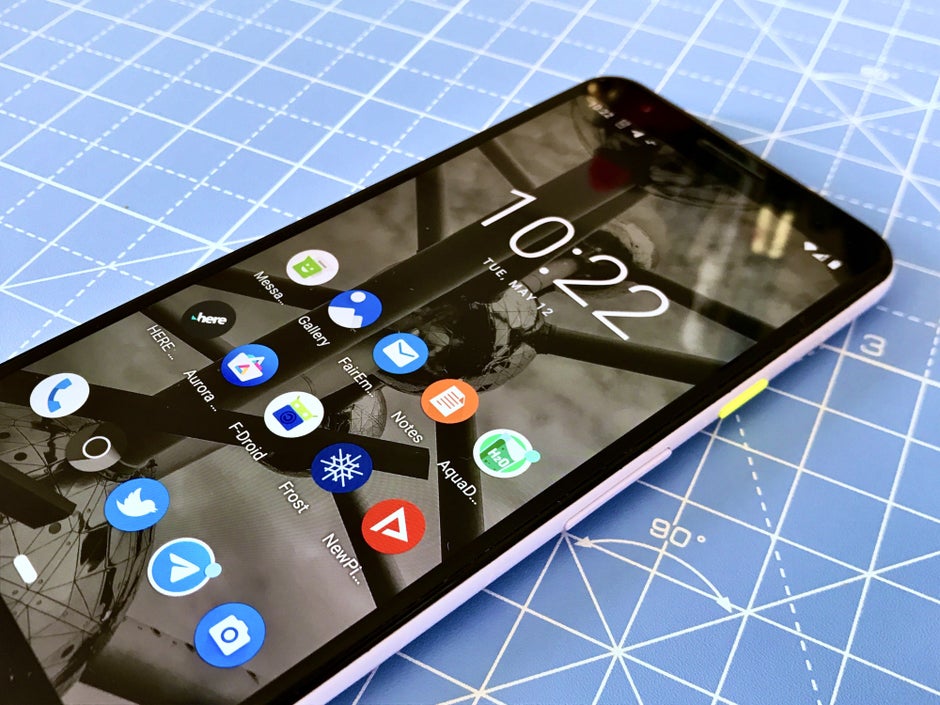This article may contain personal views and opinion from the author.

Edward Snowden is one of the most well-known names in circles where mass surveillance and the NSA (National Security Agency) in general are often the topics of discussion.
After working with the CIA and at the NSA, in 2013 he fled the US and leaked thousands of classified NSA documents, revealing highly secret government information to the world.
As a high-profile US whistleblower, he’s still unable to return to his country, currently living under asylum in Russia, which granted him an unlimited permanent residency as of 2020.
We won’t be getting into the details surrounding this fascinating man and his government leaks, but the one detail about him that actually relates to PhoneArena, and for the phone enthusiast is quite interesting to know.
Edward Snowden recommends GrapheneOS, an Android-based smartphone operating system
We’ve talked about smartphone security and privacy quite a bit this passing year. From giving you a list of the most popular messaging apps ranked by privacy, to going in-depth on whether Apple’s newest iPhone 13 really respects your privacy as much as the Cupertino company suggests.And the NSA does come up in the latter, particularly its PRISM surveillance program that we and the world wouldn’t even know about if it wasn’t for Snowden’s leaks.
In any case, if you are the type of person who doesn’t quite trust neither Google nor Apple to handle your private information, you may find it interesting to know about GrapheneOS.
This is an open source non-profit project developed by a small organization headed by security engineer Daniel Micay, aiming to be a “privacy and security focused mobile OS with Android app compatibility”. And it is!
If I were configuring a smartphone today, I’d use @DanielMicay‘s @GrapheneOS as the base operating system. I’d desolder the microphones and keep the radios (cellular, wifi, and bluetooth) turned off when I didn’t need them. I would route traffic through the @torproject network.
— Edward Snowden (@Snowden) September 21, 2019
Even Twitter’s former CEO Jack Dorsey showed interest in GrapheneOS
At the beginning of this year, Twitter’s then-CEO Jack Dorsey posted a cryptic tweet with just a link to the GrapheneOS website, seemingly giving it a silent recommendation.Of course, without much context, people were left to figure out what he was trying to say on their own, but it’s safe to assume Dorsey too has an interest in this security-oriented Android OS.
What’s wrong with using Android or iOS?
In Edward Snowden’s own words:
“The iOS and Android operating systems that run on nearly every smartphone conceal uncountable numbers of programming flaws, known as security vulnerabilities, that mean common apps like iMessage or web browsers become dangerous: you can be hacked.”
What does GrapheneOS look like?
Image credit: Medium
Picture stock Android without the Google Play services, and that’s essentially it. It’s not a radical new experience that has a learning curve, but a fairly familiar Android one. Except, of course, technically more secure. Let’s get into that real quick…
What’s so secure about GrapheneOS?
First and foremost, despite being Android-based, GrapheneOS has no Google apps or services built-in, meaning you won’t be getting any Big Brother vibes from the search engine giant, which normally collects quite a bit of information on you if you’re using a regular Android phone.
And, as we mentioned, Google is allegedly participating in the NSA’s PRISM program. Which means that if requested, Google will give the NSA all of your private information, including your internet communications.
Furthermore, without getting too technical, GrapheneOS features enhanced disk encryption, meaning it would be very difficult for anyone, even professional hackers, to get access to your files.
Things like how Wi-Fi works, cellular tracking, basically anything that relies on third parties (e.g. your internet provider) and could get you identified is also either modified, or at the very least you get advice on how you can approach it most securely by the GrapheneOS team.
And the list of security features gets more and more complicated after that. Being a private individual definitely isn’t simple nowadays.
Should I install GrapheneOS?
Unless you’re also a government whistleblower taking asylum somewhere away from home, surely you don’t need to go as far as installing GrapheneOS on your personal phone.However, if you’re just curious or really privacy-conscious, and you have a supported Google Pixel model, you can head on over to the official installation guide and give it a try.


